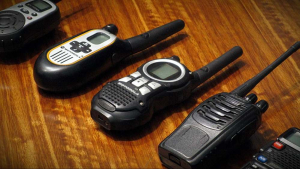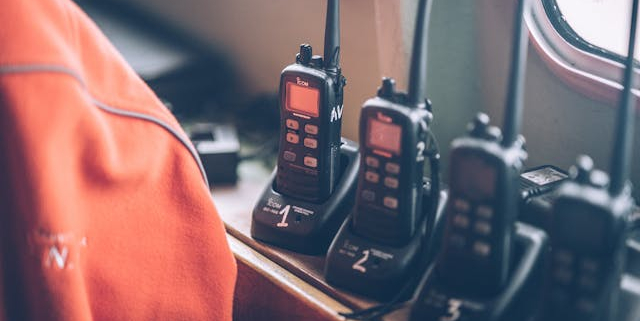How Do Two-Way Radios Transform Communication in Livestock Management?
In the heart of every thriving farm, effective communication is the lifeblood that keeps operations running smoothly. Two-way radios are revolutionising livestock management by bridging the gap between team members spread across expansive pastures and busy barns.
Imagine a herdsman instantly alerting the vet about a health concern or coordinating feeding schedules with just the push of a button. These powerful devices not only enhance real-time communication but also empower workers to respond quickly to situations, ensuring optimal animal welfare and efficiency.
Dive into how two-way radios are transforming the livestock industry, one conversation at a time.
The Significance of Communication in Livestock Management
Strong communication skills are crucial for the effective management of livestock operations. These include coordinating tasks among team members and ensuring that everyone is informed about animal health, feeding schedules, and breeding practices. It further fosters collaboration between farmers, veterinarians, and suppliers, enhancing decision-making and problem-solving.
Additionally, clear communication helps in educating employees about best practices and safety protocols, ultimately leading to improved animal welfare and productivity. By establishing open lines of communication, livestock managers can quickly address issues and adapt to changing circumstances in the farming environment.
Here are the key areas where communication plays a vital role:
Daily Operations Coordination
Coordinating daily tasks such as feeding, milking, and health checks is essential in livestock management. Knowing how to use a two-way radio is crucial as it helps facilitate real-time communication among workers, allowing instant schedule and task updates. For example, if one worker finishes feeding in one barn, they can quickly inform others to ensure no wasted time.
Health Monitoring and Reporting
Monitoring the health of livestock requires constant vigilance. Two-way radios enable staff to report any signs of illness or distress immediately. For instance, if a worker notices a cow showing signs of colic, they can quickly contact the veterinarian or alert other team members, ensuring a swift response to potential health issues.
Emergency Situations
Emergencies can occur at any time in livestock operations, from animal escapes to severe weather conditions. Two-way radios allow for rapid communication in these critical moments.
A worker can alert the entire team about an animal on the loose or call for help if there’s a medical emergency, ensuring that everyone can respond promptly.
Herd Management and Movement
Managing herds, especially in large pastures, requires efficient communication. Two-way radios enable workers to coordinate movements, whether it’s gathering cattle for breeding or moving sheep to new grazing areas. Clear instructions can be relayed quickly, reducing stress on the animals and ensuring smoother operations.

Benefits of Two-Way Radios in Livestock Management
Two-way radios offer immediate communication in livestock management, allowing team members to coordinate activities effectively across expansive areas. They enhance safety by enabling quick responses to emergencies and health issues.
Some of the major benefits Include:
Increased Efficiency
Two-way radios enhance overall operational efficiency. By allowing workers to communicate instantly, tasks are completed faster, and coordination improves. This efficiency leads to better use of time and resources, ultimately positively impacting productivity.
Improved Safety
Safety is a top priority in livestock management. Two-way radios promote a safer work environment by allowing workers to communicate hazards immediately. For instance, if a worker encounters a dangerous situation, such as a loose animal or equipment malfunction, they can alert others quickly to prevent accidents.
Enhanced Team Collaboration
Two-way radios foster better teamwork. When team members can communicate easily, it strengthens collaboration and promotes a sense of community. Workers can share information about livestock behaviour or environmental conditions, leading to apt decision-making.
Real-Time Updates and Decision Making
In an industry where conditions can change rapidly, having the ability to share real-time information is invaluable. Two-way radios allow for quick updates on weather changes, animal health, or operational adjustments, enabling managers to make informed decisions promptly.
Cost-Effectiveness
Compared to mobile phones, two-way radios can be more cost-effective for agricultural operations. They don’t require cellular service, leading to lower operational costs. Additionally, with durable designs, they often require less maintenance and replacement.
Hence, two-way radios are better than cell phones.

Best Practices for Implementing Two-Way Radios in Livestock Management
To maximise the benefits of two-way radios, consider the following best practices adopted for livestock management:
Training Staff on Effective Use
Investing in training is essential to ensure all staff members are comfortable using two-way radios. Teach employees about proper etiquette, such as initiating communication and using clear, concise language to convey messages effectively.
Establishing Communication Protocols
Create clear communication protocols for various scenarios. For instance, establish a code system for emergencies, routine check-ins, and reporting health issues. This structure will help streamline communication and ensure everyone knows how to respond in different situations.
Regular Equipment Maintenance
Ensure that all radios are regularly maintained and charged. Schedule routine checks to ensure they’re functioning correctly and address any issues promptly. This maintenance will prevent communication breakdowns when they are most needed.
Encouraging Open Communication
Foster an environment where all team members feel comfortable using the radios. Encourage feedback about communication effectiveness and any challenges workers may face. This openness can lead to improvements and a more cohesive team.
Integrating with Other Technologies
Consider integrating two-way radios with other technologies, such as GPS tracking or livestock monitoring systems. This combination can enhance operational efficiency, allowing for better tracking of livestock movements and more informed decision-making.
Final Thoughts
Two-way radios are essential tools in livestock management, enhancing communication, safety, and efficiency. By facilitating immediate and reliable communication, these devices empower farmers and ranchers to optimise their operations and respond swiftly to challenges.
As the agricultural industry continues to evolve, investing in effective communication solutions like two-way radios is crucial for ensuring success in livestock management.
By embracing this technology, livestock managers can create a more productive, safer, and cohesive work environment, ultimately leading to better animal care and improved farm profitability.



